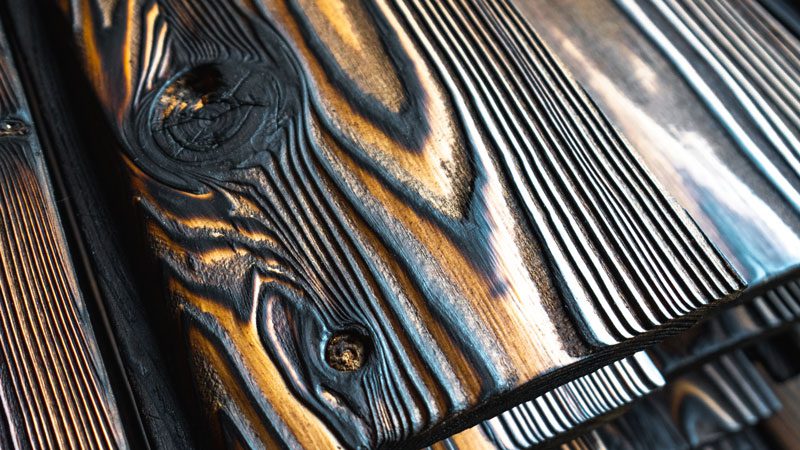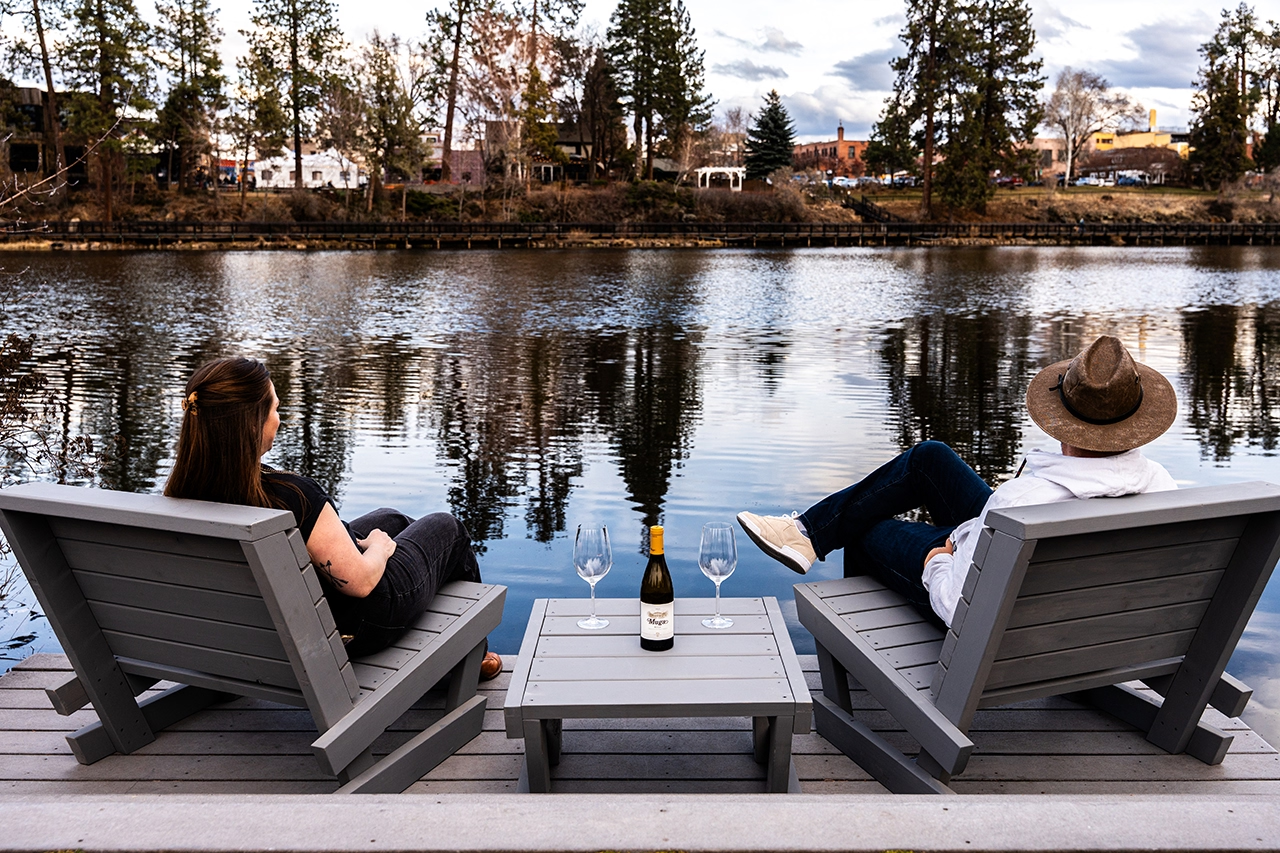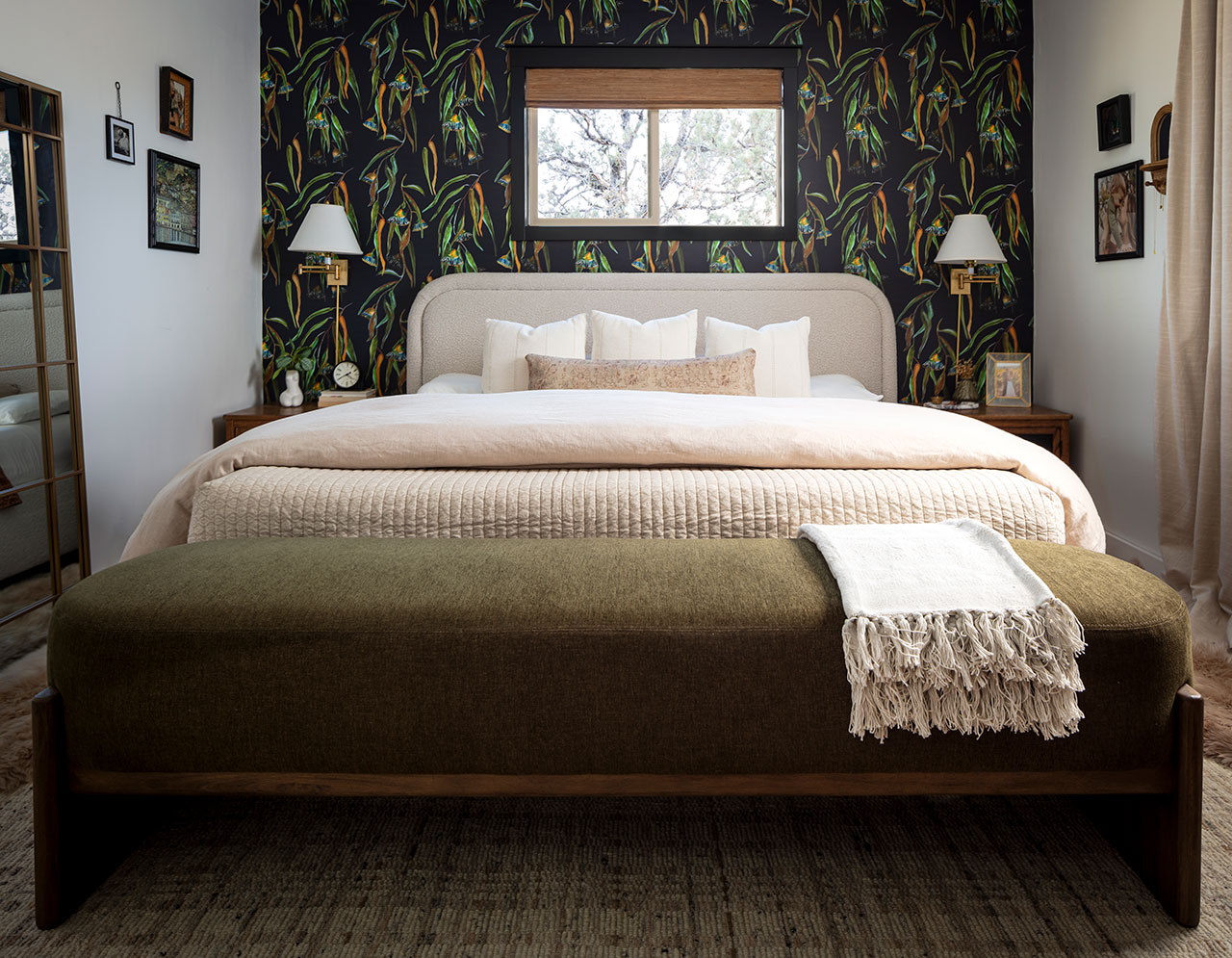photo Nakamoto Forestry
When a fire ripped through downtown Bend’s Anjou Spa in 2016, owner Jenna Walden found the spa literally in a pile of ashes. It was a defining moment for the business, with Walden choosing to rebuild the spa back stronger, even finding a way to incorporate the business’s fiery past into the design of the new space in west Bend. “It was a total loss,” recalled Walden, “but I knew I was going to rebuild, and when I was thinking about it, I wanted to try and add shou sugi ban into the design. I was tired of all the mountain rustic and mid-century modern designs, I wanted to add something new here.”
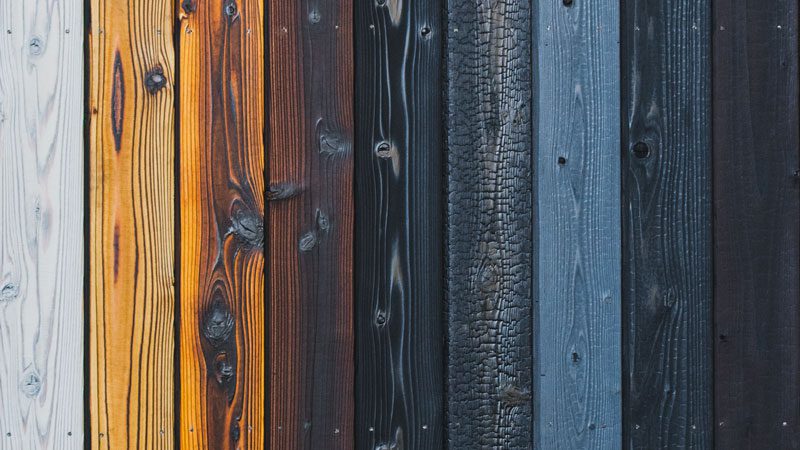
Though shou sugi ban is relatively new to the West, it is a centuries-old design technique from Japan known there as “yakisugi,” which translates to “charred cypress.” Walden chose to use this technique on a prominent wall at the entrance of the new building.
North America’s largest producer of shou sugi ban, or yakisugi, happens to be based in Portland, and is helping bring the unique technique to more Oregon homes and other buildings. “We take Japanese cypress trees, logged from our sustainable forests in Japan, and we burn, or char the wood, which enhances the color of the wood from black to almost a white and grey tone,” explained Aaron Davis, digital marketing manager for Nakamoto Forestry, which is also the oldest company in the world making yakisugi in the traditional method. “After the burning, we brush the wood, and add an oil, which enhances the textures and the grains.”
Shou sugi ban is used not only as a cool elemental design on interior walls, but it is also considered a premium exterior cladding because it holds up extremely well to the elements. “Burning or charring the wood makes it fire resistant,” said Allison Hall, Oregon sales manager for Pioneer Millworks, a reclaimed and sustainable wood product company with an office in Portland, and with projects in Central Oregon. “Raw wood will burn at 450 to 500 degrees, but the combustion point for the charred wood is 2,000 degrees. By heating the wood, you cook out the sugars, which case hardens the wood, and it also makes it pest-resistant from insects like termites and carpenter ants that feed off of those sugars and cellulose.”
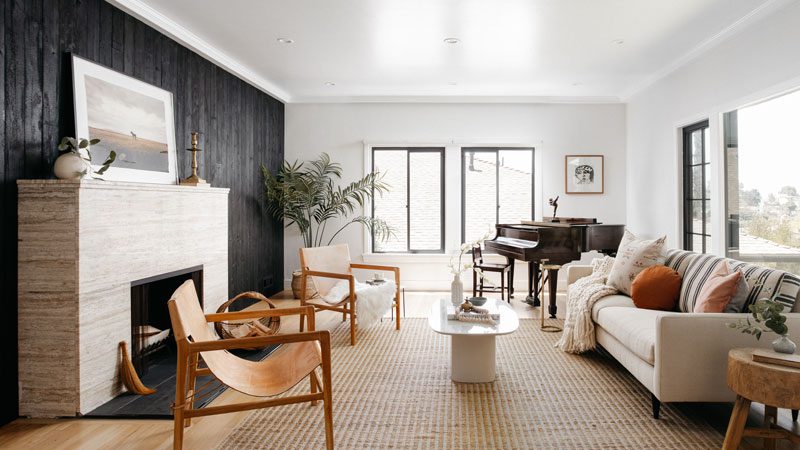
According to both Pioneer Millworks and Nakamoto Forestry, case-hardened wood will last at least fifty years or for the life of the structure, with very minimal maintenance. “The Japanese also found that not only was charred wood pest and fire resistant, but that the carbon layer also stands up to wind, rain and snow,” explained Davis. “The Japanese have also found that the charred wood is naturally UV protected, and keeps it from wood rot.”
Shou sugi ban comes in a variety of textures from something like alligator skin to more of a silky-smooth variety, and various colors from black to toast to an almost white tone.
Pioneer Millworks has put its own American spin on shou sugi ban, by adding colors like red and blue, along with more traditional wood tones and grains. All the company’s timber comes from sustainable forests in the Pacific Northwest and is milled in McMinnville. “We can’t pinpoint exactly how yakisugi came about because Japan was a closed society for so long … but we know in rural areas they were using it for centuries for exterior home cladding, on fences, and storehouses that held valuables like rice and other food products, because of the fire-resistant properties,” Davis said. “It’s really quite ingenious charring wood to make it fireproof.”

Perhaps the oldest example of shou sugi ban can be seen on Japan’s Buddhist Temple in Nara Prefecture. The five-story pagoda is one of the world’s oldest, built in 607 AD. The temple caught fire, but was eventually rebuilt in 1711 using old yakisugi lumber. “I think the Japanese celebrate the aging process and see the beauty of the patina in shou sugi ban,” said Hall, who has seen rapid sales growth, especially now in wildfire-prone areas. “Japanese aesthetic finds patina that comes with age desirable and unique. The imperfections are the point.”
Back at Anjou Spa, Walden found shou sugi ban so beautiful and captivating she studiously researched how she could do it herself and found a partner at the DIY Cave in Bend. After experimenting and practicing on countless pieces of lumber, she finally summoned the courage to control the fire and char the pieces that now make up the accent wall at the new spa, which opened one year and one month after the original spa burned down. “It is sort of like the Phoenix, rising out of the ashes,” said Walden, who now laughs at the irony. “It is very symbolic, isn’t it?”

